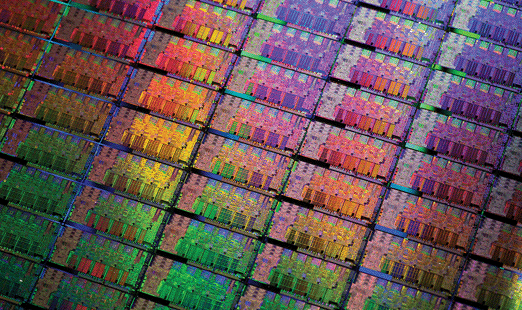Single-Atom Transistor Built
Tuesday, March 6th, 2012The smallest working transistor ever made has been created by a team of Australian and American physicists from a single atom of phosphorus. A transistor is a tiny device that controls the flow of electric current in radios, television sets, computers, and almost every other kind of electronic equipment. By switching between “on” and “off,” transistors physically simulate the 1′s and 0′s that represent digital information. Like the transistors used in virtually all modern computer chips, the atom-sized transistor was etched into a crystal of silicon. However, significant additional development is needed before a single-atom transistor could be used in practical microprocessors because it requires temperatures well below freezing.
Since the 1960′s, chipmakers have managed to shrink transistors in half roughly once every 18 months–a trend known as Moore’s law. Microprocessors from the 1970′s had a few thousand transistors. Modern fingernail-sized computer chips may contain billions of microscopic transistors. Such transistors may be less than a hundred atoms thick.

Hundreds of millions of transistors are built into microprocessors, which carry out the instructions that make up computer programs. Microprocessors are manufactured in a grid pattern on a silicon wafer, as seen in this photograph. Intel Corporation
However, transistors and other computer components can only shrink so far–namely, to the size of an atom. Transistors work by switching electric current on and off. An electric current consists of a flow of electrons–negatively charged subatomic particles that move from atom to atom. Building a transistor from electrons would be impossible for much the same reason that building a faucet from water molecules would be impossible.
If Moore’s law holds, computer chip transistors will reach the atomic-scale limit within a few decades. Scientists believe that radically different designs are necessary to shrink computer components smaller than the atomic scale.
Additional World Book articles:
- A Look Back at Computers (A Special Report)
- Bardeen, John
- Computing with Molecules (A Special Report)
- Schrieffer, John Robert
- Shockley, William


